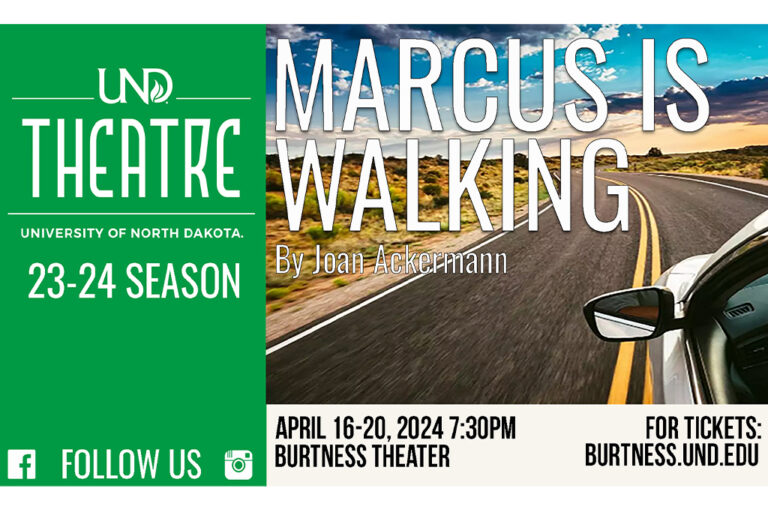Getting to the root of diversity, equity and inclusion
UND has what it takes to make DEI more than a policy, says Karen Crawford Simms, keynote speaker at TTaDA Fall Innovative Learning Symposium

Across her 30-year career of advocacy for marginalized people, Karen Crawford Simms has learned how to break down diversity, equity and inclusion in simple terms.
At Wednesday’s Fall Innovative Learning Symposium, hosted by UND’s Teaching Transformation and Development Academy (TTaDA), Simms – owner and founder of Meridian K Consulting & Counseling Services in Champaign, Ill. – got to the root of key vocabulary in presenting “Strategies for Building Belonging” to UND faculty and staff, as well as peers tuning in from other North Dakota universities and Tribal Colleges.
“Diversity asks ‘Who is in the room?’” she said. “Equity asks ‘What are the barriers? What are the policies, procedures and practices getting in the way?’ And inclusion asks ‘How are we structured? How do we make sure the tent is as broad as possible?’”
Simms went on to say that when we ask these questions, not only do we build a more positive campus environment for more people, but also we help condition our brains to handle the inherent stress of considering these challenges in our society.
And as with everything that we build as a muscle, Simms said, the more we do it, the more comfortable we become.
“Human beings have biases about everything because the brain wants to make life efficient,” said Simms during her keynote speech in UND’s Memorial Union ballroom. “We start categorizing things about people, and this is why diversity, equity and inclusion are so important. The only way that we keep our brains from having biases is that we expose ourselves to new things.”
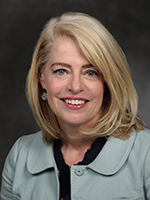
The hybrid, day-long symposium, titled “Inclusion Across Campus: Strategies for Building Belonging,” was developed in support of Goal 5 of UND’s Strategic Plan: “Foster a welcoming, safe, and inclusive campus climate.” The event featured workshops and an evening student listening session, and was open to all NDUS and Tribal College faculty, staff, students and administrators.
“This year’s theme for the symposium reflects an institutional imperative at UND not just to advance equity and inclusion, but to reframe our thinking and go beyond engaging diversity as something we as educators must attend to,” said Anne Kelsch, director of faculty development at TTaDA and co-lead of Goal 5. “To utilize diversity as the primary lens through which we understand and advance the work of education is to acknowledge diversity’s role as a driving force for positive change in academia and the broader world.”
In her keynote address, Simms said she sees a path forward for UND via university-wide adoption of President Andy Armacost’s leadership philosophy: love your people, take care of them, involve them and offer them opportunities for growth. And throughout the symposium’s sessions, she talked about a variety of frameworks by which to consider subsequent steps in UND’s strategic plan.
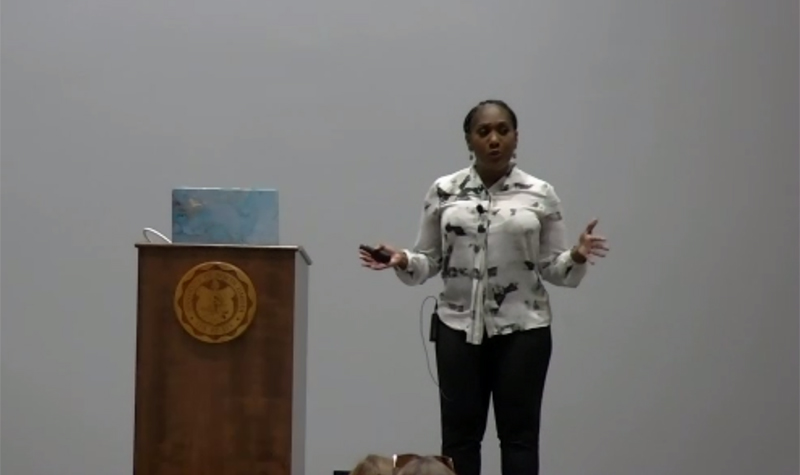
Seize the moment
When Simms reflects on the reasons that the phrase “diversity, equity and inclusion” rings alarms in the minds of so many, it’s because, following the Civil Rights era, people thought they could “policy” a path to those three principals.
The mindset was: if we can change the paper, the hearts and minds will change too, she said in her address.
“Being a big policy, procedure and practice person myself, I was so tempted to think that,” Simms remarked. “But then I realized that so much of implementation is personality driven. So if it’s in the paper, but doesn’t have buy-in, the vision leaves when the stakeholders leave.”
What exists now is a contentious environment. Simms said she’s felt a shift in the winds in recent years when it comes to simply having conversations around diversity, equity and inclusion, let alone taking actual steps toward a more just society.
That’s why it’s important for UND to seize the moment it has under Armacost’s vision, in order to plot a course forward that’s rooted in acknowledging the realities of embracing diversity, equity and inclusion at an institutional level.
“When we’re talking about diversity, equity and inclusion, there is loss,” Simms said.
When we make room for those things in our institutions, departments and classrooms, people have to shift – which can feel awkward, she continued. People get used to making decisions efficiently among people who look and sound like them. To let other voices in slows down the process, and it can get complicated.
Simms cited cultural researchers who have said resulting hesitancy and resistance is perhaps ingrained in our DNA.
Today’s culture has led to people “lecturing, fussing and talking” in a way that assumes people can be convinced to change their behavior, Simms said. But as most people know, evoking shame and guilt doesn’t really work well to get what you want.
“And I want to assure you, in an equity framework, everybody will get what they need,” she remarked. “There’s no lose-lose, it’s all win-win. Because at any moment, you could be somebody who needs something.
“So if we’re thinking about equity, although some people might get more today, who knows what might happen to you tomorrow where you need something at the table. If you start to think of it as an asset, that you will get what you want as you need it, it makes life better for everybody.”
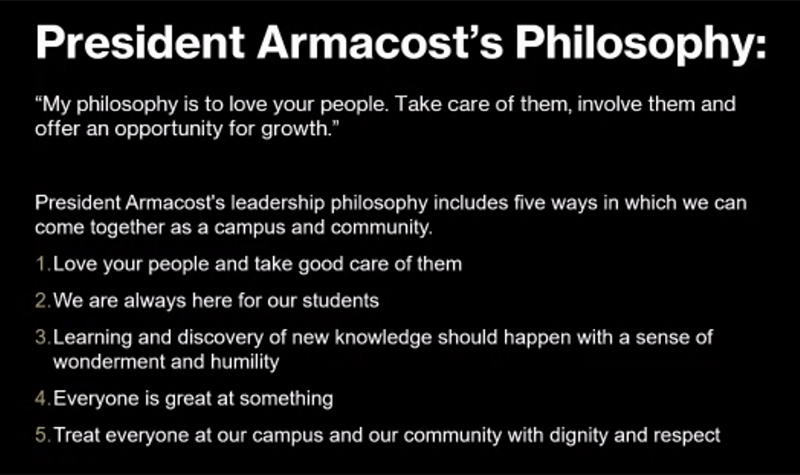
‘Grand vision’ for diversity, equity and inclusion on campus
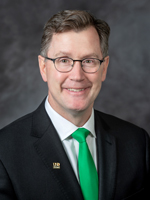
Armacost, who arrived at UND last year, assumed the presidency near the tail end of the current UND Strategic Plan window, which extends through 2022. Still, he’s intent on maximizing the “welcoming, safe, and inclusive campus climate” called for in Goal 5.
“There’s much work going on across our campus, in various pockets,” said Armacost in introducing Simms’ keynote presentation. “My goal is to unify those efforts and to make sure we’re doing things on behalf of our students, faculty and staff that make sense.
“I have a grand vision of doing this important work in a way that sets a national standard for other college campuses and communities – a way that doesn’t drive us apart, but rather brings us together.”
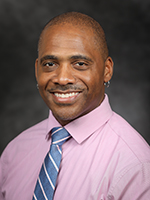
Tamba-Kuii Bailey, special assistant to the president for diversity and inclusion, said TTaDA brought a “powerful and dynamic” presenter to campus in Simms, and that her approach encouraged UND to acknowledge its moments of resistance and seeming chaos that it will experience as diversity, equity and inclusion become more central to the mission and work of UND.
“Using collaboration, empowerment and restorative practices, Karen supportively challenged us to develop a framework and collective focus that positively changes the culture and work that we relate to diversity, equity and inclusion,” Bailey told UND Today.
Simms sees the president’s leadership philosophy as being completely aligned with a “trauma-informed view of the world.”
“From this view, people need to ‘be, become and belong,’” Simms said.
By that, she meant that everyone needs the right to be themselves, fully, safely and abundantly. People need spaces and places – such as TTaDA – to become all that they can be with opportunities and resources for intellectual and creative stimulation. Then, finally and most importantly, Simms said, people need to feel like they’re connected to their community – to know that people care about them.
“When those things happen, we as human beings thrive,” Simms concluded. “When they don’t, people start to feel marginalized and disconnected and they check out.”
That point brought her to describing the root meanings of diversity, equity and inclusion. She warned her audience not to get caught up in the words – those buzz topics that evoke stress and wariness – but to focus on what people can control to make others feel loved and cared for. When people experience a disconnection to their environment, it fits within the definition of trauma, Simms said.
“What makes an adverse situation a traumatic one is the impact,” Simms remarked. “The fewer resources I have both internal and external, the more vulnerable I am when bad things happen, which is why that equity piece is super important.”
With that established, Simms said that making people feel safe – physically and emotionally – is a first priority. In the classroom, emotional safety is regularly mischaracterized as removing challenging conversations and topics from the environment. Simms said it’s more about not intentionally causing harm in addressing those things. She went on to highlight establishing trustworthiness and fostering collaboration in the academic environment, as well as creating restorative processes in the inevitable event of conflict.
Following her keynote, Simms held sessions with faculty and staff to go over specific strategies to build a sense of belonging for everyone at UND. Those looking for more information can find content from the symposium, as well as other resources on the topic, on the TTaDA website.
“When we’re thinking about diversity, equity and inclusion, the temptation is to scale down,” Simms said. “The thought is, ‘If I am creating access, I want to remediate.’ That’s actually a deficit model, which doesn’t work. An empowerment stance says that everyone has the ability to be great and amazing.
“We just need to transfer resources, skills and support so that everyone has that chance.”


